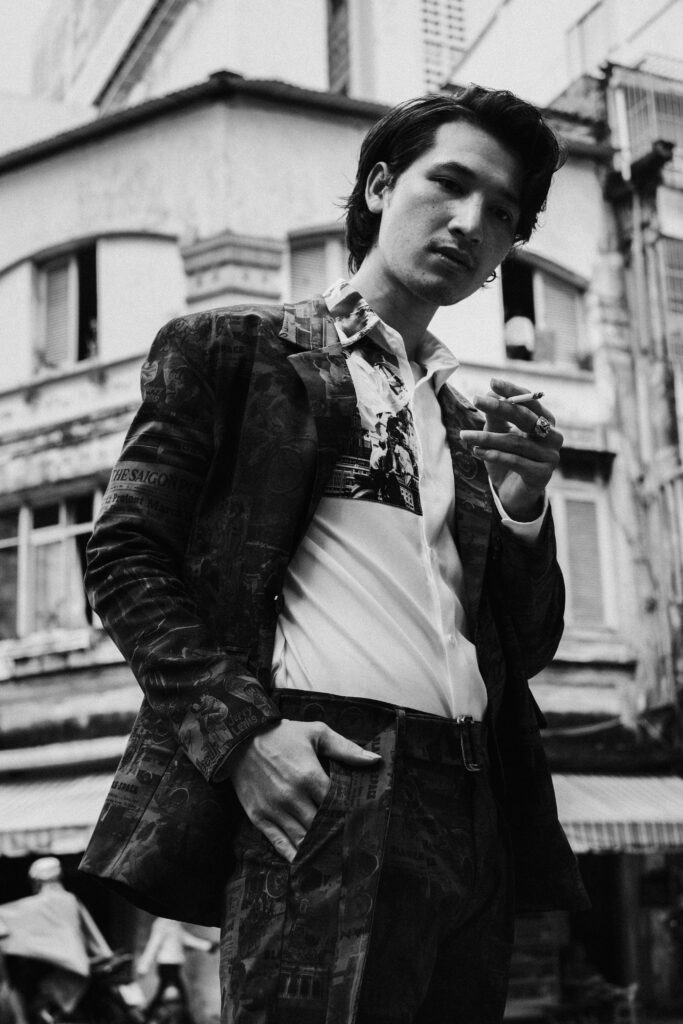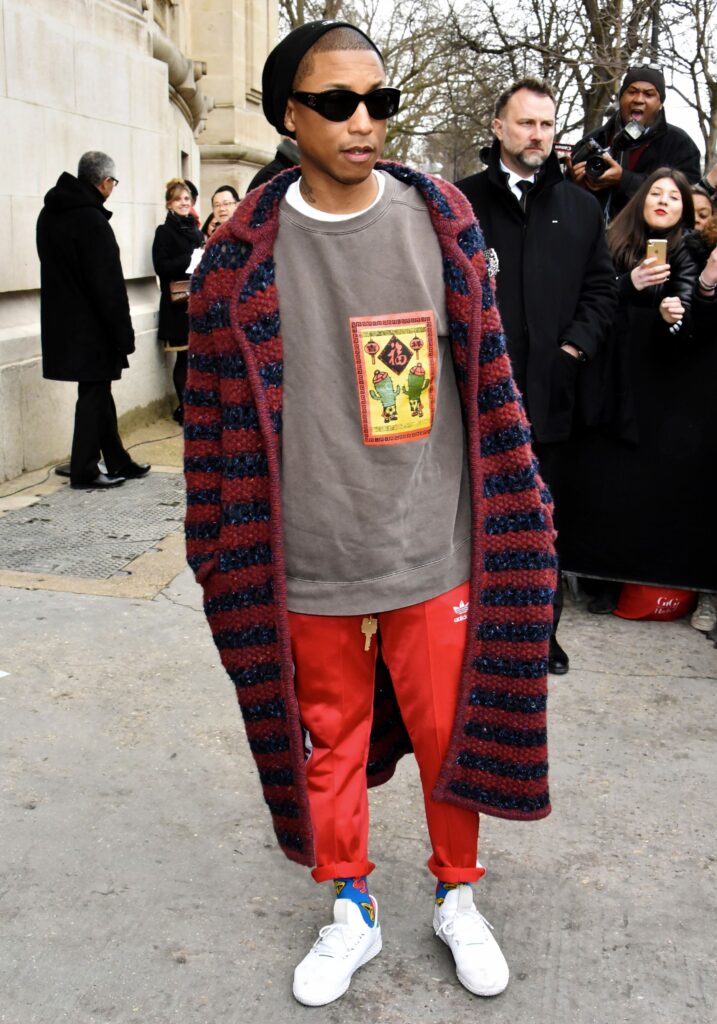The Evolution of Street Style: A Look at the History and Culture of Fashion
I. Introduction : Evolution of Street Style
Street style has always been a significant influence on the fashion business, reflecting current fashion trends, cultural movements, and individual expression. Street fashion has changed dramatically over time, influencing and being influenced by each era’s society and culture from the early days of urbanisation to the present. We’ll examine street style’s development and history in this blog, as well as how it came to play such a significant role in fashion culture.
- Definition of street style and its significance in fashion

The word “street style” is used to characterize popular fashion trends and styles in cities, especially those that are worn by regular people rather than just models and celebrities. Street style is frequently considered to be more relaxed and expressive than traditional fashion and frequently reflects the culture and values of a specific location or time period. Because it provides designers and trend forecasters with inspiration and reflects the tastes and attitudes of the general public, street style is important in the fashion business. The ability to show one’s individuality and inventiveness through clothing choices makes street style important as well.
II. Early History of Street Style
Before the industrial revolution, the upper class and its status insignia generally controlled urban fashion. However, a new type of fashion started to appear with the development of mass production and the growth of young culture. Young people started to reject the stringent regulations and formal clothes of the past in the late 19th and early 20th century and instead adopted a more relaxed and expressive style. This served as the basis for contemporary street style, which would gain more and more sway over the years.
- Pre-industrial revolution fashion in urban areas
Before the industrial revolution, the upper class and its status insignia generally controlled urban fashion. Clothing from the pre-industrial era was typically handmade from pricey materials like silk, wool, and linen. It was also extensively embellished with fine embroidery and other decorations because these were considered to be signs of wealth and social standing. Clothing was frequently made to last for many years and was frequently fitted to suit the person properly. As the upper class frequently travelled abroad and brought back the newest trends, fashion in pre-industrial metropolitan regions was frequently affected by the newest patterns from Europe. In general, pre-industrial urban fashion was very formal, with rigid regulations and norms of dress that were frequently prescribed.
- Emergence of youth culture and the influence on fashion
Street style in particular was greatly influenced by the advent of young culture in the late 19th and early 20th century. The stringent regulations and formal clothes of the past were starting to be rejected by young people in favour of a more relaxed and expressive look. The development of mass production, which made clothing more accessible and affordable to a wider range of individuals, served as the catalyst for this change. The advent of youth culture also signalled the start of fashion as a means of individual expression and rebellion as opposed to merely serving as a reflection of social standing.
III. Street Style in the 20th Century

Street style in particular was greatly influenced by the advent of young culture in the late 19th and early 20th century. The stringent regulations and formal clothes of the past were starting to be rejected by young people in favour of a more relaxed and expressive look. The development of mass production, which made clothing more accessible and affordable to a wider range of individuals, served as the catalyst for this change. The advent of youth culture also signalled the start of fashion as a means of individual expression and rebellion as opposed to merely serving as a reflection of social standing.
- The rise of subcultures and their impact on fashion trends

The emergence of numerous subcultures during the course of the 20th century significantly influenced fashion trends, especially street style. Punk, grunge, and hip hop, for example, each had their own distinctive styles that were frequently rebellious and edgy in nature. These trends affected not just the individuals of their own subculture in terms of clothing choices, but also the greater fashion business and popular trends. For instance, the 1970s punk movement was marked by leather jackets, studded belts, and shredded clothing; these trends were ultimately incorporated into mainstream fashion. Fashion trends were significantly influenced by the grunge movement of the 1990s, which was characterised by flannel shirts and tattered trousers. The 1980s and 1990s hip hop culture, with its baggy jeans and giant T-shirts, also had an impact on mainstream fashion. In general, the emergence of subcultures has aided in the diversification and expansion of the spectrum of fashion trends as well as the development of street style.
- The influence of music and celebrities on street style

Street style and fashion trends have always been greatly influenced by music and celebrities. Famous actors, musicians, and other figures of the 20th century acted as fashion role models for their respective decades and were frequently imitated by their fans. For instance, James Dean and Elvis Presley both had a reputation for having a rebellious and cool sense of style, and their choices in clothing had a significant impact on young people at the time. Similar to this, Madonna’s daring and eclectic sense of style had a significant influence on 1980s and 1990s fashion. In more recent years, celebrities like Kanye West and Pharrell Williams have also had a major influence on street style, with their unique and creative fashion choices being widely emulated. Overall, the influence of music and celebrities on street style has helped to bring new ideas and trends to the forefront of fashion culture.
IV. Street Style in the 21st Century
The popularity and accessibility of street style have grown significantly in the twenty-first century. Fashion trends can now travel and become popularised faster than ever thanks to the emergence of social media. Personal style has also gained importance as more people use social media to display their distinctive looks and motivate others. As a result, anyone may now design and express their own personal style, making fashion more democratic.
- The role of social media in popularizing street style trends
Social media has been instrumental in promoting street style trends and making them more widely available in the twenty-first century. With the help of websites like Instagram, Pinterest, and Tumblr, people can quickly communicate their particular fashion preferences with a large audience. This has not only made it possible for a wider variety of fashion trends, but it has also made it simpler for individuals to find and follow new designs and stylists. Additionally, social media has made it simpler for consumers to meet like-minded people and create online groups around shared fashion interests. As a result, street style has become more democratized, with anyone having the ability to create and share their own style. Social media has also made it easier for brands and designers to reach and connect with their customers, which has further influenced the popularity of street style trends.
- The democratization of fashion and the rise of personal style
The term “democratisation of fashion” describes the movement toward a more diverse and inclusive fashion business where anyone can develop and express their own personal sense of style. The development of social media, which has made it simpler for people to express and promote their individual styles with a global audience, has contributed to this transition. As a result, the importance of personal style has increased, with people increasingly utilising fashion to express their distinct identities and personalities. Small and independent designers have become more popular as a result of the democratisation of the fashion industry because they can now readily engage with their clients on social media. This has helped to diversify the fashion industry and bring new perspectives and ideas to the forefront. Overall, the democratization of fashion has helped to make fashion more accessible and inclusive for everyone.
V. Conclusion
Since its inception, street style has advanced significantly and has changed significantly over time. Street style has always been a reflection of the culture and society of the era, from the youth culture of the 20th century to the democratisation of fashion in the 21st. It will be interesting to see how street style develops going forward and how it influences the environment we live in.
- Recap of the evolution of street style and its cultural significance
Each era’s cultural and societal changes had an impact on how street style developed. In the early stages of urbanisation, the upper class and its status symbols generally controlled street fashion. However, a more relaxed and expressive style started to emerge in the late 19th and early 20th century with the emergence of young culture. Street fashion expanded in variety and influence as the 20th century went on, with the emergence of subcultures like punk, grunge, and hip hop influencing fashion trends. The emergence of social media in the twenty-first century has increased street style’s popularity and accessibility while elevating the significance of personal style. As a result, fashion has become more democratic, with anyone having the ability to create and share their own style. Street style is significant in the fashion industry because it serves as a source of inspiration for designers and trend forecasters, and it also reflects the preferences and attitudes of the general public. Street style is also significant because it allows individuals to express their personal style and creativity through their fashion choices.
- Future outlook for street style trends
The direction of street style trends is difficult to forecast, but it is likely that socioeconomic and cultural shifts will continue to have an impact on them. It’s likely that street style trends may become even more democratized and accessible as technology develops and social media becomes an ever bigger part of our life. Individuals will probably continue to value personal style since it allows them to express their own identities and personalities through clothing. It is also possible that sustainable and eco-friendly fashion will become more popular, as consumers become more conscious of the environmental impact of the fashion industry. Overall, the future of street style trends is likely to be diverse and constantly evolving, reflecting the changing world around us.


This stage is fabulous. The splendid material exhibits the proprietor’s enthusiasm. I’m overwhelmed and expect additional such incredible substance.
I really liked this article blog_title ! I visit your blog quite often and you’re always coming out with some great stuff. I shared this on my facebook, IG and my audience enjoyed it ! Maintain the excellent work 🙂 !